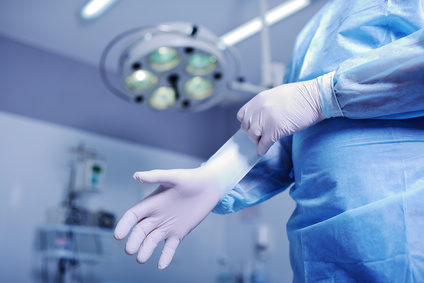In recent years, we have seen (both as witnesses and actors) an exponential increase in the number of fluoroscopically-guided cardiovascular interventions carried out by interventional cardiologists, electrophysiologists, and vascular surgeons. Not long ago, most pathologies treated with these procedures were the exclusive domain of open surgery. Now, a large number of patients can be treated much less invasively, at a cost we still cannot appreciate in its entirety.
A recently published 15-year follow-up study comparing patients with abdominal aortic aneurysm treated with an endoprosthesis reported an increased incidence of cancer in these patients when compared with those treated with open surgery.
There is a significant, and appropriate, current focus on reducing patient exposure to radiation, but the same effort should be dedicated to the reduction of dose exposure to operators.
Read also: “Effects of Cerebral Radiation on Interventional Cardiologists”.
A higher incidence of cancer in interventionists is basically due to brain cancer, breast cancer and melanoma; in consequence, measuring the occupational hazard of radiation exposure, with sensitive tools that can provide clarification of its biological effects, is fundamental.
Expression of the DNA damage/repair marker, gamma-H2AX, DNA damage response (DDR) marker, and phosphorylated ataxia telangiectasia mutated (pATM), was quantified in circulating lymphocytes in operators during the peri-operative period of endovascular (infra-renal, branched, and fenestrated) aortic repair using flow cytometry.
These markers were separately measured in the same operators wearing leg lead shielding and upper body protection and compared with those unprotected. Susceptibility to radiation damage was determined by irradiating operator blood in vitro.
Read also: “Nearly half of interventional cardiologists may have pre-cataract lesions”.
Gamma-H2AX and pATM levels increased significantly in operators after branched and fenestrated procedures (p < 0.003 for both). Only pATM levels increased after a conventional infra-renal endroprosthesis (p < 0.04). Expression of these markers fell back to baseline values in operators 24 h after the procedure.
There was no marker elevation after open repair.
The use of shielding annulled gamma-H2AX and pATM elevation after branched or fenestrated procedures.
Read also: “The End of Aspirin for Anticoagulated Patients Undergoing PCI”.
The expression of gamma-H2AX varied significantly when the blood of different operators was exposed to the same radiation dose in vitro. This raises speculation on differences in individual sensitivity to exposure.
Conclusion
This is the first study to detect acute DNA damage in operators after endoprosthesis procedures and highlights the high usefulness of protective shielding. Defining the relationship between this response and cancer risk may better inform safe levels of chronic low dose radiation exposure for the staff.
Editorial
Certain conclusions can be derived from this work, but, so far, there are more questions than answers:
- Conventional dosimetry fails to measure the biological consequences of radiation exposure in operators.
- Safe radiation doses have been defined without considering the seemingly obvious existence of differences in individual sensitivity.
- Protective shielding is essential in the reduction of radiation exposure.
- The use of biomarkers including gamma-H2AX and pATM may help with the classification of individual risk, the definition of mechanisms through which radiation may cause mutagenesis, and the optimization of protective strategies.
Original title: Radiation Induced DNA Damage in Operators Performing Endovascular Aortic Repair.
Reference: El-Sayed T et al. Circulation. 2017 Oct 20. Epub ahead of print.
Subscribe to our weekly newsletter
Get the latest scientific articles on interventional cardiology
We are interested in your opinion. Please, leave your comments, thoughts, questions, etc., below. They will be most welcome.





